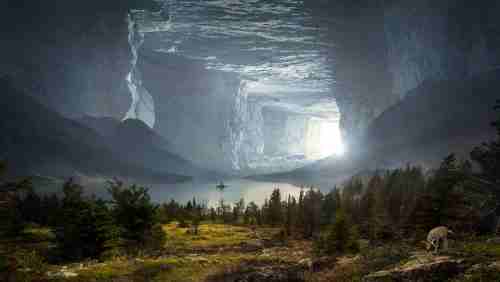LEARNING OBJECTIVES
In this article, the author has explained environmental chemistry, earth environment, and its components such as Atmosphere, lithosphere, hydrosphere, and Bio or ecosphere.
Environmental Chemistry
Table of Contents
That branch of chemistry that deals with the chemicals and other pollutants in the environment is known as environmental chemistry.
It is a very important branch of chemistry which deals with the following topics.
- Sources
- Reactions
- Transportation of chemicals
- Transportation of toxic substances
No doubt these things are developed by human activities. In environmental chemistry, we also study the adverse effects of these things on human and other.
Relation of environmental chemistry with other branches of science
Environmental chemistry is related with all other branches of science. Some of these are as follows.
- Biology
- Physics
- Medical
- Agriculture
- Public health
- Sanitary engineering
Enviornment and its components
The enviornment is consisted of following components…
- Atmosphere
- Hydrosphere
- Lithosphere
- Biosphere or ecosphere
Let us discuss all of these in detail…

1: Atmosphere
The layer of gases surrounding the earth is known as atmosphere.
Composition of atmosphere
Atmosphere is composed of various gases in different proportions.
For example..
| N2 | 78 % |
| O2 | 21 % |
| Ar | 0.9 % |
| CO2 | 0.03 % |
| Trace amounts | H2, O3, CH4, CO, He, Ne, Kr, Xe |
| Others | Water vapours |
The atmosphere is about 1000 km thick above the surface of the earth. Half the mass of the atmosphere is concentrated in the lower 5-6 km.
Radiation absorbed by atmosphere
Sunlight is consisted of variety of wavelengths. Some of the wavelengths are very dangerous for plants and animals. Atmosphere absorbs most of these cosmic radiations. It also absorbs harmful electromagnetic radiations like UV rays.
Which rays are not absorbed by the atmosphere?
Radiations from the sunlight whose wavelength lies between 1300- 2500 nm reach the eatth’s surface almost unabsorbed. The range of this wavelengths includes..
- Near UV
- Visible
- Near Infrared
Benefits of gases of atmosphere
Gases present in the atmosphere are essential to maintain the life on the earth.
Some of the important benefits of theses gases are as follows.
- Oxygen is required for breathing
- Carbon dioxide is required for plant photosynthesis.
- Nitrogen is used by nitrogen-fixing bacteria to meet the demand for nitrogen for plants.
- Water vapors are responsible for maintaining various forms of life on the earth.
- Atmosphere maintains the hat balances of the earth.
2: Hydrosphere
Hydrosphere is that part of the enviornment whch includes all water bodies.
What is included in hydrosphere?
It includes all water resources..
- Oceans
- Rivers
- Streams
- Lakes
- Polar ice caps
- Glaciers
- Ground water reservoirs
Oceans contain 97 % of the earth’s water. It has a high salt content. This water cannot be used for human consumptions due to the high percentage of salt in it.
Polar ice caps and glaciers are consisted of 2 % of the earth’s total supply.
Fresh water includes surface water, Rivers, Lakes, streams and underground water. It is only 1 % of the total water which is used for agriculture (69%), industrial (23%) and domestic (8 %) purposes.
3: Lithosphere
The lithosphere is the component of the environment which is consisted of the rigid rocky crust of the earth.
It makes most of the earth’s crust.
Composition of Lithosphere
Lithosphere has been composed of many elements present on the periodic table.
99.5 % of mass of the lithosphere consists of the following elements.
| Oxygen | 46.6 % |
| Silicon | 27.72 % |
| Aluminium | 8.13 % |
| Iron | 5 % |
| Calcium | 3.63 % |
| Sodium | 2.83 % |
| Potassium | 2.59 % |
| Magnesium | 2.09 % |
| Ti, H2, P | Less than 1% |
Trace elements in lithosphere
There are some trace elements present in the lithosphere. These trace elements range from 0/1 to 0.2 %.
All these trace elements do not exist in free state. Rather these elements are present in the form of compounds as minerals. These compounds are crystalline in nature.
| Carbon | Manganese |
| Sulfur | Barium |
| Chlorine | Chromium |
| Flurine | Zirconium |
| Nickle | Strontium |
| Vanadium |
4: Biosphere or Ecosphere
The component of the environment that includes the region of the environment capable of supporting life is called the biosphere.
Biosphere consists of
- Lower atmosphere
- Oceans
- Rivers
- Lakes
- Soils
- Solid sediments
It is also known as ecosphere because it is related to the interactions of communities of organisms with the environment. This environment includes animals, plants, and microorganisms.